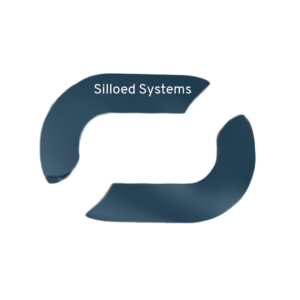5 big data issues and how to beat them
When realizing what it will take to incorporate production data in order to improve the factory floor, it may seem very overwhelming. But the advantages that can come from data integration and digitization are already known to us. Without this integration, we know that we cannot deliver exactly what is needed just-in-time without waste and without delays. It prevents us from keeping too much raw material or finished products in stock because data allows us to decide exactly what is needed. It makes our warehouses run more efficiently. Efficiencies that were never possible before are generated when supply chain networks and software exchange their data all the way to the production floor.

If you are anything like the businesses we support every day, you might not know how to take advantage of all the data you have scattered through your supply chain and manufacturing facilities. Here are five ways in which data can be streamlined and harvested to maximize your production activities.
1. Taking down data silos
 Data silos are one of the major challenges preventing the efficient use of the data that occurs in manufacturing plants. Such silos are most of the time not deliberate. They might only be a biproduct of an age, when nobody thought of gathering data on an industrial scale. Your line had a data collection and supervisory control (SCADA) that was able to gather some simple diagnostics and that was enough. To ensure everything was working, the operator could check in, so there was no need to view the factory as a whole.
Data silos are one of the major challenges preventing the efficient use of the data that occurs in manufacturing plants. Such silos are most of the time not deliberate. They might only be a biproduct of an age, when nobody thought of gathering data on an industrial scale. Your line had a data collection and supervisory control (SCADA) that was able to gather some simple diagnostics and that was enough. To ensure everything was working, the operator could check in, so there was no need to view the factory as a whole.
Or maybe the production engineering team was just in a hurry to get the manufacturing lines up and running to get the latest product out of the door and fill orders. They decided to go back and connect all their IoT devices to a dashboard and automate reports on a weekly basis. Between lines being down and having to gear up for the next new product launch, they just didn’t have time to get back to it.
Whatever the cause, these silos remain. And being able to get inside them with the data will provide critical insight into your plant’s operational performance. It can highlight machine issues, alert you to quality problems, and let you know if goals are not met by your overall equipment effectiveness (OEE).
2. Connecting to ERP
 Your enterprise resource planning system (ERP) is another big data silo that can provide your plant with a variety of advantages when tapped. The ERP scheme pushes work orders down to the factory floor so that daily, weekly, or monthly production runs are planned. Without production interruptions, operations workers running around in a panic or taking a hit on OEE results, there is little-to-no capacity to respond to spikes or dips in demand.
Your enterprise resource planning system (ERP) is another big data silo that can provide your plant with a variety of advantages when tapped. The ERP scheme pushes work orders down to the factory floor so that daily, weekly, or monthly production runs are planned. Without production interruptions, operations workers running around in a panic or taking a hit on OEE results, there is little-to-no capacity to respond to spikes or dips in demand.
You can use real-time demand data to guide decisions on the plant floor by connecting your ERP system with your MES system. For instance, without letting anyone in production know, the sales team ran a promo on your gluten-free recipe. No problem, the machine will direct you for an additional hour to run the line gluten-free to accommodate the spike in demand. And the integration of your ERP and MES systems is a must if your aim is to handle just-in-time inventory levels.
3. Working paperless
 Paper processes are far too common in the world of manufacturing, in our experience. It costs you money to use paper to track orders as they navigate through production and puts you at risk. The expenses associated with a paper process are not limited to the paper cost. Then you need to find a way to file the paper and store it which costs money. Then there is the expense of taking the order data and paying someone to manually type it on the line into a computer, all the while ensuring that what was written was legible and that the person who keys it in would not make a mistake. If you need to get the document from one location on the factory floor to another then you are paying someone to walk it around.
Paper processes are far too common in the world of manufacturing, in our experience. It costs you money to use paper to track orders as they navigate through production and puts you at risk. The expenses associated with a paper process are not limited to the paper cost. Then you need to find a way to file the paper and store it which costs money. Then there is the expense of taking the order data and paying someone to manually type it on the line into a computer, all the while ensuring that what was written was legible and that the person who keys it in would not make a mistake. If you need to get the document from one location on the factory floor to another then you are paying someone to walk it around.
If these costs aren’t enough of a deterrent, then consider the risks that you introduce by using a paper process. By making a mechanism available for human error to take place, there is a risk to your credibility. Errors in the documentation of critical data, such as serial numbers, in spec and out of spec measurements, or even specific work instructions, for example, can cause major downstream repercussions and effect on the client. And what happens when you are audited for food or drug protection and since the printouts are lost, the records are missing or incomplete?
We can do much better in the digital world of today. Ideally, data should stay digital from the initial order to the manufacturing floor to the doorstep of the client. To ensure that information digitization is carried out once, the process can be simplified. We can take the data from there and transfer it into production and then file it away so that if needed for an audit, it can be easily retrieved. This process of taking the production floor completely digital enables greater performance, increased output volumes and enhanced product quality.
 4. Improving traceability
4. Improving traceability
The ability to track the entire production process offers a variety of important advantages in the manufacturing environment. Have you ever had a quality issue in the field and tried to trace it back to the batch or the line to find out whether you have a widespread problem? Or did you discover that the supplier had given information that was not specific? Issues like this include monitoring during the entire journey the material takes through your plant—from gate to gate.
5. Lack of communication
 Have you ever had a line set up for a sprint, or worse to start production, only to find that you were lacking a vital component or raw material? Your supplier has been delayed, or the incoming quality team has rejected the new shipment from the supplier, but no one has told the production team. Now you’re going to have to tear down the line and prepare to run another product. All work-in-progress (WIP) needs to be scrapped. The line operators are confused and irritated. All of this leads to a loss of time and materials, eventually affecting the bottom line.
Have you ever had a line set up for a sprint, or worse to start production, only to find that you were lacking a vital component or raw material? Your supplier has been delayed, or the incoming quality team has rejected the new shipment from the supplier, but no one has told the production team. Now you’re going to have to tear down the line and prepare to run another product. All work-in-progress (WIP) needs to be scrapped. The line operators are confused and irritated. All of this leads to a loss of time and materials, eventually affecting the bottom line.
This is truly tragic given that it is entirely avoidable. Your logistics software or Warehouse Management System (WMS) has all the information you need to warn your production lines about supply shortages or delays. This knowledge can be fed into production such that informed decisions can be taken as to what goods are to be produced. If a line changeover takes a considerable amount of time, it can be strategically designed to reduce downtime and raise OEE. You can track raw materials when they reach your facility through manufacturing until they are shipped out as finished products.
The answer to solving these problems

The Objective MES and WMS system helps to address all five data problems in one single solution. The solution ensures the digital integration of your processes, from ERP to production machinery and SCADA/PLC systems. This integration ensures an efficient flow of products and resources from raw materials coming into the plant to finished goods going out of the door. Our gate-to-gate solution puts our customers in a position to achieve their aim of mastering manufacturing and system accountability, enhancing operating performance, providing relevant data and rising corporate profitability.

